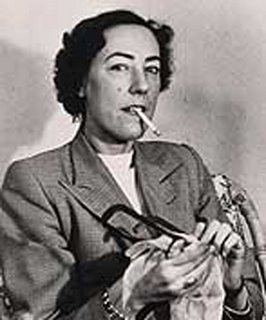
Part of Series
Een mislukt huwelijk, betekenisloze trouw, een minnaar op papier; telkens opnieuw hebben vrouwen schandalen veroorzaakt, omdat ze leefden en beminden zoals zij het wilden. In Echte vrouwen beminnen anders zijn de opwindendste levensgeschiedenissen verzameld van vrijgevochten vrouwen als Belle van Zuylen, Alma Mahler Werfel, Anna Blaman en Rita Mae Brown, die zich niet door conventies lieten intomen, maar deden wat hun hart hen ingaf. Echte vrouwen beminnen anders is het tweede deel in de succesvolle 'Echte vrouwen' serie, waarin verhalen van vrouwelijke topauteurs verzameld zijn rond een bepaald thema.
Authors
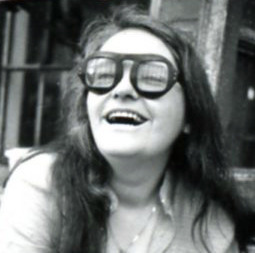
Katherine Murray "Kate" Millett was an American feminist writer, educator, artist, and activist. She attended Oxford University and was the first American woman to be awarded a postgraduate degree with first-class honors by St. Hilda's. She has been described as "a seminal influence on second-wave feminism", and is best known for her 1970 book Sexual Politics," which was her doctoral dissertation at Columbia University. Journalist Liza Featherstone attributes previously unimaginable "legal abortion, greater professional equality between the sexes and a sexual freedom" being made possible partially due to Millett's efforts. The feminist, human rights, peace, civil rights, and anti-psychiatry movements have been some of Millett's key causes. Her books were motivated by her activism, such as woman's rights and mental health reform, and several were autobiographical memoirs that explored her sexuality, mental health, and relationships. Mother Millett and The Loony Bin Trip, for instance, dealt with family issues and the times when she was involuntarily committed. Besides appearing in a number of documentaries, she produced Three Lives and wrote Not a Love Story: A Film about Pornography. In the 1960s and 1970s, Millett taught at Waseda University, Bryn Mawr College, Barnard College, and University of California, Berkeley. Millett was raised in Minnesota and has spent most of her adult life in Manhattan and the Woman's Art Colony, which became the Millett Center for the Arts in 2012, that she established in Poughkeepsie, New York. Self-identified as bisexual, Millett was married to sculptor Fumio Yoshimura from 1965 to 1985 and had relationships with women, one of whom was the inspiration for her book Sita. She has continued to work as an activist, writer, and artist. Some of her later written works are The Politics of Cruelty (1994), about state-sanctioned torture in many countries, and a book about the relationship with her mother in Mother Millett (2001). Between 2011 and 2013 she has won the Lambda Pioneer Award for Literature, received Yoko Ono's Courage Award for the Arts, and was inducted into the National Women's Hall of Fame.

French-born novelist, passionate eroticist and short story writer, who gained international fame with her journals. Spanning the years from 1931 to 1974, they give an account of one woman's voyage of self-discovery. "It's all right for a woman to be, above all, human. I am a woman first of all." (from The Diary of Anaïs Nin, vol. I, 1966) Anaïs Nin was largely ignored until the 1960s. Today she is regarded as one of the leading female writers of the 20th century and a source of inspiration for women challenging conventionally defined gender roles.

Rita Mae Brown is a prolific American writer, most known for her mysteries and other novels (Rubyfruit Jungle). She is also an Emmy-nominated screenwriter. Brown was born illegitimate in Hanover, Pennsylvania. She was raised by her biological mother's female cousin and the cousin's husband in York, Pennsylvania and later in Ft. Lauderdale, Florida. Starting in the fall of 1962, Brown attended the University of Florida at Gainesville on a scholarship. In the spring of 1964, the administrators of the racially segregated university expelled her for participating in the civil rights movement. She subsequently enrolled at Broward Community College[3] with the hope of transferring eventually to a more tolerant four-year institution. Between fall 1964 and 1969, she lived in New York City, sometimes homeless, while attending New York University[6] where she received a degree in Classics and English. Later,[when?] she received another degree in cinematography from the New York School of Visual Arts.[citation needed] Brown received a Ph.D. in literature from Union Institute & University in 1976 and holds a doctorate in political science from the Institute for Policy Studies in Washington, D.C. Starting in 1973, Brown lived in the Hollywood Hills in Los Angeles. In 1977, she bought a farm in Charlottesville, Virginia where she still lives.[9] In 1982, a screenplay Brown wrote while living in Los Angeles, Sleepless Nights, was retitled The Slumber Party Massacre and given a limited release theatrically. During Brown's spring 1964 semester at the University of Florida at Gainesville, she became active in the American Civil Rights Movement. Later in the 1960s, she participated in the anti-war movement, the feminist movement and the Gay Liberation movement. Brown took an administrative position with the fledgling National Organization for Women, but resigned in January 1970 over Betty Friedan's anti-gay remarks and NOW's attempts to distance itself from lesbian organizations. She claims she played a leading role in the "Lavender Menace" zap of the Second Congress to Unite Women on May 1, 1970, which protested Friedan's remarks and the exclusion of lesbians from the women's movement. In the early 1970s, she became a founding member of The Furies Collective, a lesbian feminist newspaper collective in Washington, DC, which held that heterosexuality was the root of all oppression. Brown told Time magazine in 2008, "I don't believe in straight or gay. I really don't. I think we're all degrees of bisexual. There may be a few people on the extreme if it's a bell curve who really truly are gay or really truly are straight. Because nobody had ever said these things and used their real name, I suddenly became [in the late 1970s] the only lesbian in America."
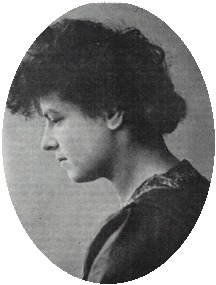
Carry van Bruggen is the penname of Carolina Lea de Haan. She also wrote under the penname Justine Abbing. See for a full list of all her work the DBNL database: http://dbnl.nl/auteurs/auteur.php?id=...
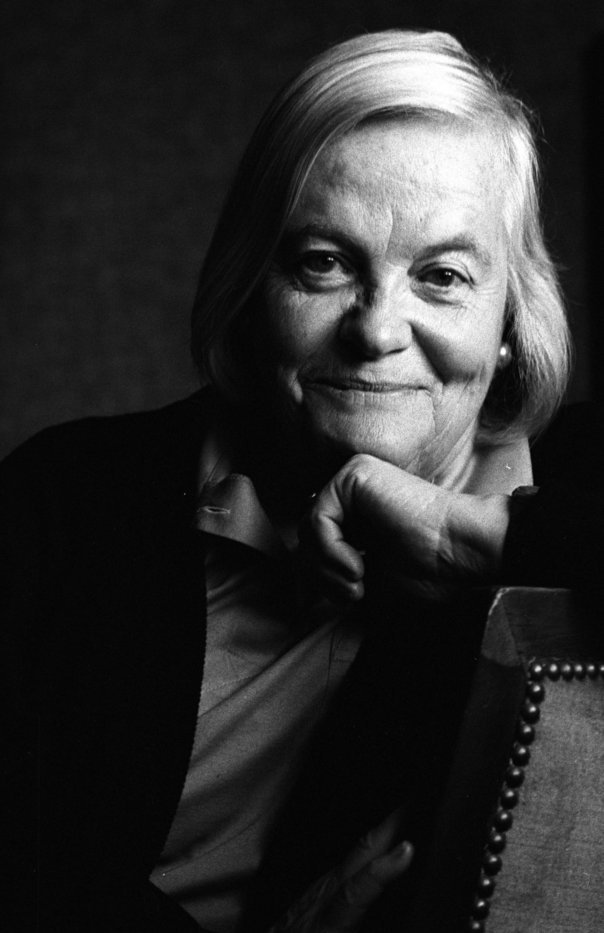
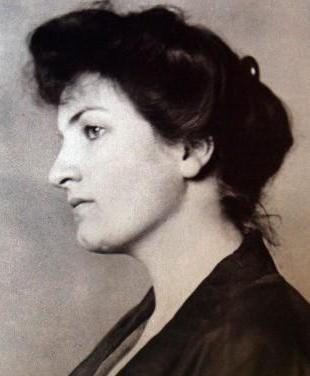
Barones Monique (Monika) Maria van Paemel is een Vlaamse schrijfster. Monika van Paemel in de Nederlandstalige Wikipedia Monika van Paemel in de Digitale Bibliotheek voor de Nederlandse Letteren Monika van Paemel bij "Schrijversgewijs" Baroness Monique (Monika) Maria van Paemel is a Flemish writer. Monika van Paemel in the English Wikipedia
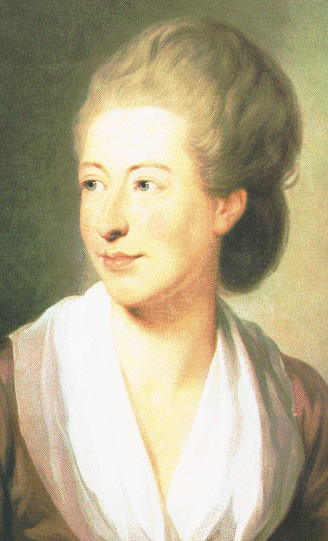
Zie ook: Isabelle de Charrière Isabella Agneta Elisabeth van Tuyll van Serooskerken, known as Belle van Zuylen in the Netherlands and, after her marriage, as Madame de Charrière elsewhere, was a Dutch writer of the Enlightenment who lived the latter half of her life in Switzerland. She is now best known for her letters although she also wrote novels, pamphlets, music and plays.

Marguerite Duras was born Marguerite Donnadieu on 4 April 1914, in Gia Định, Cochinchina, French Indochina (now Vietnam). Her parents, Marie (née Legrand, 1877-1956) and Henri Donnadieu (1872-1921), were teachers from France who likely had met at Gia Định High School. They had both had previous marriages. Marguerite had two older siblings: Pierre, the eldest, and Paul. Henri Donnadieu fell ill, returned to France, and then died in 1921. Between 1922 and 1924, the surviving family lived in France while her mother was on administrative leave. They then moved back to French Indochina when she was posted to Phnom Penh followed by Vĩnh Long and Sa Đéc. The family struggled financially and her mother made a bad investment in an isolated property and area of rice farmland in Prey Nob,[2] a story which was fictionalized in Un Barrage contre le Pacifique. In 1931, when she was 17, Duras and her family moved to France and she completed her baccalaureate. Duras returned to Saigon again with Paul and her mother in 1932 and completed her second baccalaureate, leaving Pierre in France. In 1933, Duras embarked alone for Paris to study law and mathematics. She soon abandoned this to concentrate on political science.[2] After completing her studies in 1938, she worked for the French government in the Ministry of the Colonies. In 1939, she married the writer Robert Antelme, whom she had met during her studies. During World War II, from 1942 to 1944, Duras worked for the Vichy government in an office that allocated paper quotas to publishers and in the process operated a de facto book-censorship system. She also became an active member of the PCF (the French Communist Party) and a member of the French Resistance as a part of a small group that also included François Mitterrand, who later became President of France and remained a lifelong friend of Duras. In 1943, when publishing her first novel, she began to use the surname Duras, after the town that her father came from, Duras. In 1950, her mother returned to France, wealthy from property investments and from the boarding school she had run. She is the author of a great many novels, plays, films, interviews, and short narratives, including her best-selling, apparently autobiographical work L'Amant (1984), translated into English as The Lover. This text won the Goncourt prize in 1984. The story of her adolescence also appears in three other forms: The Sea Wall, Eden Cinema and The North China Lover. A film version of The Lover, produced by Claude Berri, was released to great success in 1992. Other major works include Moderato Cantabile, also made into a film of the same name, Le Ravissement de Lol V. Stein, and her film India Song. She also wrote the screenplay for the 1959 French film Hiroshima mon amour, which was directed by Alain Resnais. Duras' early novels were fairly conventional in form (their 'romanticism' was criticised by fellow writer Raymond Queneau); however, with Moderato Cantabile she became more experimental, paring down her texts to give ever-increasing importance to what was not said. She was associated with the Nouveau roman French literary movement, although did not definitively belong to any group. Her films are also experimental in form, most eschewing synch sound, using voice over to allude to, rather than tell, a story over images whose relation to what is said may be more-or-less tangential. Marguerite's adult life was somewhat difficult, despite her success as a writer, and she was known for her periods of alcoholism. She died in Paris, aged 82 from throat cancer and is interred in the Cimetière du Montparnasse. Her tomb is marked simply 'MD'. From wikipedia



